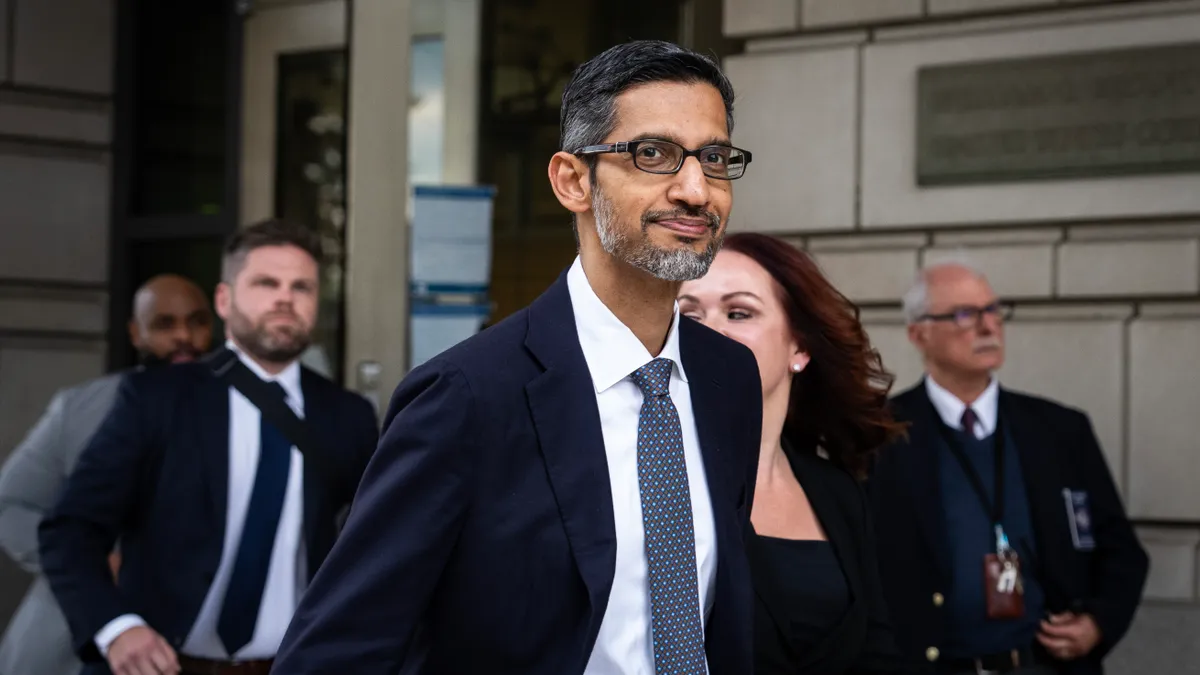Editor's Note: The following is a guest post from Matt Preschern, CMO at HCL Technologies.
Being a CMO used to be straightforward, with a laser focus on branding, advertising and lead generation. Enterprise functions outside of marketing "ownership" were not a problem, as the CMO didn't report the financials, wasn't responsible for deploying technology, didn't have to approve all hires and really didn't "own" the sale in many cases.
But, let's face it — we modern CMOs have inherited a different ballgame. Changing buying patterns, service and delivery models and audience diversity mean that CMOs must be mindful of concerns well out of the purview of our predecessors. The 21st-century CMO must vigilantly interpret buyers' needs and transform them into a cohesive experience across all brand touchpoints and enterprise departments.
This multiplication of CMO responsibilities sees the role re-invented as what we'll call a "chief collaborator" focused on product development, operations, sales, finance, information technology and human resources. In each case, a successful CMO must act as the "voice of the customer" to ensure that market needs are met and core brand values are represented.
That sounds nice in theory. How does it work in real life?
In a 'customer-centric' market, service and marketing are the same
In our customer-centric market, there is nothing more important to success than getting your service operations right. That is where the CMO as chief collaborator comes in. Research shows that service failures can drive away up to 75% of customers; on the other hand, making just a 10-point improvement in a CX score can translate to more than $1 billion in revenue for the average global enterprise.
CMOs have access to customer sentiment through market research and social listening and have the reputation management technology to distill market noise into actionable insights for operations. Buyers complain about what they care about — so giving the CMO a seat at the operations table ultimately means getting closer to serving customers as they want to be served.
Products made by the development team alone are good but can be great with the CMO
In the old model of product development, companies did their best to determine what demands existed in the market based on sales patterns, focus groups and other 'educated guesses.' They decided on a course of action, developed a product and then brought it to market. If it didn't sell, then it was back to the drawing board.
According to a study by William Souder, head of the University of Alabama College of Administrative Sciences, insufficient input from marketing in R&D projects in this old model was attributable to up to 68% of total product failures and 21% of partial failures.
Now, through a real-time overlay of consumer demand data with sales data, marketing has real-time insights into what is selling, what the competition is offering, what features buyers care about and which product flaws are causing pain. Putting the CMO and the head of development in the same room as frequently as possible offers enormous advantages to both functions.
Where does marketing end and sales begin?
If you can delineate that distinction in your organization, it could very well be that the CMO and head of sales are not collaborating deeply enough. The two were perhaps once regarded as separate processes, but the clarity and importance of that distinction has receded for a few reasons.
Smart mobile device ownership and social media usage now each exceed 2 billion individuals, and we are blessed with a constellation of potential marketing interactions that deliver unprecedented transparency in what it takes to turn a stranger into a buyer. Virtual interactions like social sharing and chatbots, plus shared technology systems, further blur the lines between marketing and sales.
As a result of this convergence, many enterprises are opting to fully merge their marketing and sales organizations. These cheekily-dubbed 'smarketing' departments have been shown in studies of B2B organizations to achieve up to 36% more revenue growth than their counterparts in the traditional siloed model. While that step may not be right for every enterprise, tighter collaboration better reflects the conditions of the marketplace.
CMOs need equal representation in all technology decisions
According to a Gartner survey, around two- thirds of marketers say that marketing teams lead the purchase function for marketing technology instead of IT departments. Indeed, Gartner's controversial prediction a few years ago that marketing teams would spend more on technology seems to have come true. At present, the research firm has determined that marketing and IT departments each spend between 3-3.5% of revenue on technology; as of late 2016, 71% of companies were using marketing technology and 23% had plans to start in 2017.
In short, marketing technology, once a relatively small and specialized aspect of operations, has become a core business area and principal engine of growth as digital interactions with customers have grown across enterprise departments. As such, marketing and IT must work more closely together to ensure a holistic experience for customers that spans digital touchpoints. CMOs and IT directors need to march in lockstep in the purchase and deployment of tech, websites and app integration, as well as in the implementation of good data management practices.
Without a budget, the CMO fails. Without forecasts, finance fails
Marketing may traditionally have been seen by CFOs as cost centers to be controlled. Marketing metrics tend to be "softer" than those of sales or procurement, which can immediately measure success in terms of dollars received or spent. According to a 2014 Ernst and Young poll, 59% of surveyed CFOs indicated that measuring marketing ROI was an important priority to them, with 20% calling it a "very high priority." In the same study, however, only 13% of those CFOs felt that finance and marketing were sufficiently aligned on how to do that effectively.
As methods for tracking the buyer's journey and attributing ROI have improved, the ability to offer a demonstrable relationship between marketing spend and top-line growth is putting CMOs in a better position to get the budgets they need to drive growth. But chief collaboration officers know that there is a flip side to the story: CMOs are in a unique position to help CFOs balance interests across the organization and plan budgets by leveraging predictive modeling insights. CMOs know where the trends are and therefore can create great symbiosis by supporting CFOs.
CMO guidance is integral to every single HR function
A 2016 study conducted by the Winterberry group indicated that only 5% of business leaders feel "extremely confident" that the teams within their organizations possess the experience and skills needed to roll out data-driven initiatives. But it's not just about the talent behind the application of data. Hiring decisions should be fueled by the organization's strategic growth initiatives, which should be set by the CMO in collaboration with all cross-functional teams.
With the exposure of enterprises to more directional feedback than ever via social media and third-party reviews, brand-vigilant CMOs need to work with HR to ensure that staff are educated and trained in customer care, technology trends, industry developments and the organization's brand values. This does not stop at customer-facing staff, as HR is critical to building a company culture that authentically reflects those brand values. This requires chief collaboration officers' input to all HR functions, including hiring practices, incentive systems, training and development methods and communication platforms.
The 21st-century CMO is the CEO's right-hand man
The results of a frequently-cited 2012 study revealed that 80% of surveyed CEOs did not trust in their CMOs, possibly exposing a belief that CMOs were too focused on the "fluffy" side of business. That's where collaboration can come to a CMO's rescue. Not only does the new perspective garnered through close collaboration across departments potentially prepare CMOs for their next leap up the career ladder, it may also give the CMO a bigger seat at the executive table — the one directly to the right of the CEO.
The CMO's unique access to fact-based market data, plus the insight that chief collaborator CMOs gain through deep involvement in each cross-functional bucket, makes them indispensable. The CEO gains an in-depth understanding of customer needs, plus a new perspective on the inner workings of every department in the enterprise. CMOs add value to the company, while helping CEOs make strong strategic decisions and, in return, are likely to underwrite the CMO's collaboration role to other executives.
This is how the 21st-century CMO, the chief collaboration officer, pulls departments out of outdated silos and serves perhaps the most critical role of all — helping organizations develop and leverage a customer-centric agenda.




















